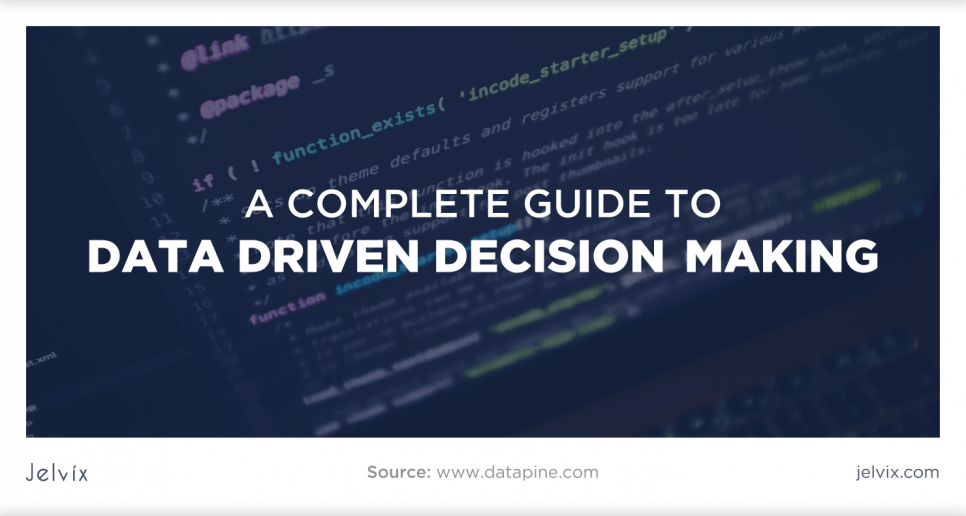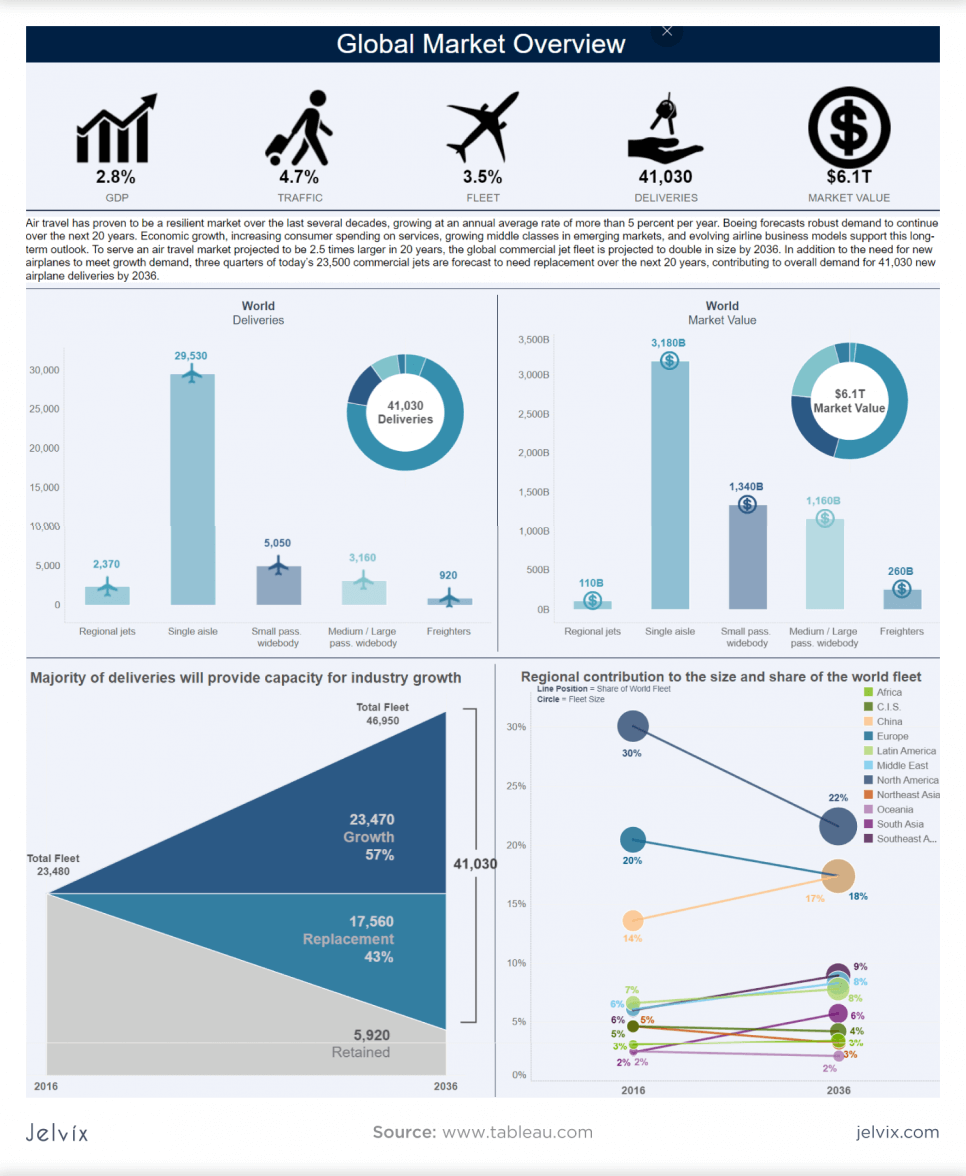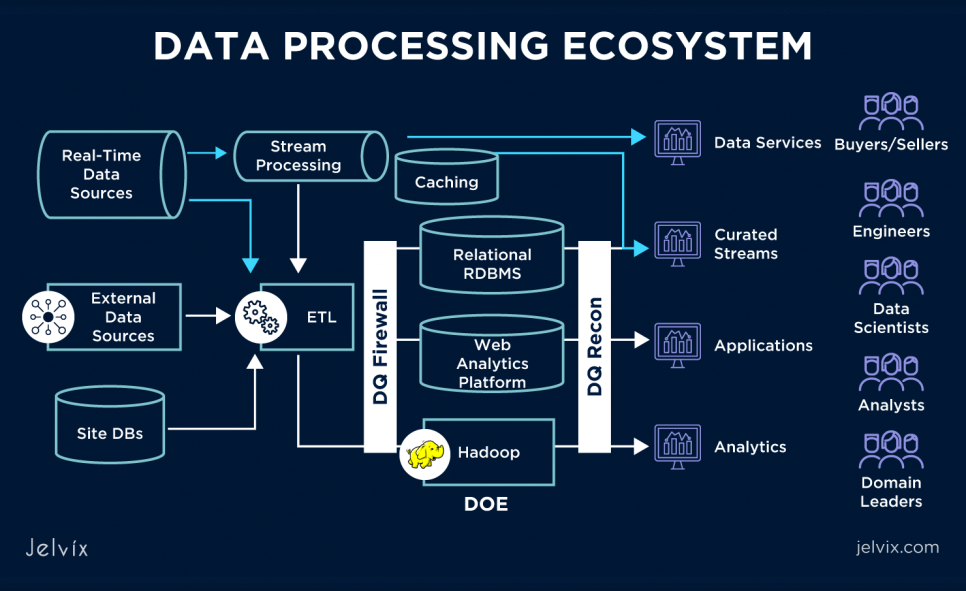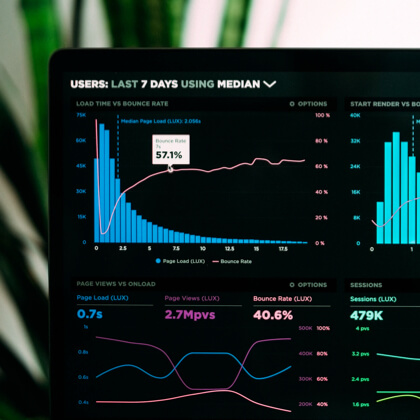Opposite to the concept of “intuition”, a data-driven decision making approach completely relies on the evidence taken from accurate numbers, detailed research rounds, and infinite calculations of different ranges.
While intuition and the feel of the market can help you understand in which direction to go, it’s data that gives you valuable insights to verify your hypotheses. According to the large-scale PwC survey, the businesses that base their strategic decisions on data are 3 times more likely to achieve long-term success than those that don’t leverage the power of big data.
Moreover, the McKinsey Global Institute reports that data-driven organizations are 23 times more likely to improve customer acquisition, six times more likely to retain clients, and 19 times to increase profits! Leveraging big data enables businesses of different ranges to make more informed decisions and enhance the customer experience.
Similar investigations can be found in a recent Harvard Business Review study, according to which the companies that heavily rely on data expect better financial performance. Consequently, they build a large and loyal audience that helps it to develop and grow.
In this article, we’ll explain the basics of data-based decision making, the benefits it can provide, and how to successfully implement this approach into your business. As a part of our discussion, we’ll also research why data-driven analytics is so important and study the cases of its successful implementation across many industries today.
What is Data-Driven Decision Making?
Data-driven decision making, abbreviated as DDDM in some cases, refers to the process of leveraging the power of big data to organize the process of decision making in an organization and validate the decisions made. Basically, that’s a more narrow concept of data analytics, which is a science of raw data analysis that helps to draw well-informed conclusions (Investopedia).
In other words, the term “DDDM” refers to the decision making process based on the profound analysis of massive volumes of data and its patterns.
In pursuit of being data-driven, many enterprises are developing three core capabilities, which are analytics agility, data proficiency, and community. These focuses allow companies to build a strong and effective data culture that improves a variety of their internal decision making cycles.
According to research by Statista, the leading countries with data-focused decision making approaches in organizations worldwide are the United States (77%), the United Kingdom, and Germany (69% each). The least focused on data-based analysis companies are mainly located in India, Spain, and Italy, with the share of respondents about 30%.
All About the Importance of Data-Driven Decision Making in 2023
The role of statistics in business decision making cannot be overestimated, as it basically helps businesses to optimize various aspects of their performance. Implementing data-driven analysis helps companies to reduce costs and optimize expenses by uncovering the most efficient ways of doing business through massive data analysis.
Businesses can also apply data analytics to make better business decisions, and deeper analyze customer behavior, industry trends, and product/service performance, which lead to new and better products and services.
Some other reasons that make better data-informed decision-making include:
- Adding more confidence to various business decisions
- Increased proactivity in decisions
- Better control over different aspects of business performance
- Fostered (data-based) fact-based decisions over assumption-based ones
- Evaluating and reducing the related risks, leveraging the potential outcomes
- Decreasing the bias in decisions and plans that transform from the occasional idea into a step-by-step strategy
- More transparent and objective decisions
- Easier progress evaluation and performance analytics
- Access to agile and flexible business decisions
- Improved forecasting and more efficient future decisions
- Eliminated possibility of human error, as the stats and trends analysis, don’t lie
As an entrepreneur, you can now evaluate the full potential of a data-driven approach and probably have already realized its perspectives. But what exactly can your business win once your business starts leveraging data analytics? Keep on reading to find that out!
Benefits of Data-Driven Decision Making for Businesses
Now that you know the answer to the question: “what is data-driven decision making?” and the reasons why it’s been widely used across many industries, it’s time to learn more about its potential. Though the major prospects of this approach are typically uncovered with the data-driven decision making examples, learning from its benefits can also come in handy for accurate strategy development.
Below are the most essential benefits any business can gain with the powerful data analytics approach.
Greater transparency and accountability
Whether the company researches customer behavior, current market performance, or sales forecasts, it will always rely on the relevant information available across different departments. Therefore, it significantly impacts the collaboration and improves the communication and contribution of each team member. Moreover, the employees are more likely to suggest improvements and advancements, as they better understand the company’s overall performance and long-term goals.
Continuous improvement
Obtaining key data from a decision making process ensures that the business achieves consistent results. Regardless of the market trends and who’s in charge of the decision making process, the business is targeted on the same data and follows the same process to make critical decisions.
Business decisions are always tied to analytics insights
In a data-driven approach, whenever the decision is presented, it’s always supported with the relevant data, so it becomes easier to spot the patterns as they emerge and identify the gaps to work with. Since data-driven organizations collect huge volumes of data over time, that can later provide insights into instant challenges and projects, like new product development or better customer targeting for long-term improvements such as, for instance, rebranding or other critical business questions.
Reduced costs and improved revenue
Becoming a data-driven organization won’t in itself cut costs. However, it can provide tons of valuable insights on how to optimize business budgeting, defining the least efficient strategies, unprofitable products or services, and other solutions. And the more effectively the data is used in data-informed decision making, the more agile your organization becomes. Thus, the companies can effectively outsmart their competition and boost revenues.
A better understanding of market trends
Adopting a data-backed methodology helps to better understand the market trends and customer needs, which are essential for making informed and effective decisions. One-third of industry professionals have suggested that the right technologies are essential to understanding business-related trends, and data-driven solutions are amongst the most efficient ones. Focusing on data-driven solutions helps businesses to reach out to relevant audiences with more targeted promotions.
How to Properly Leverage Data-Based Decision Making
Though the DDDM concept might seem too challenging to learn at first, this methodology is much easier to implement in practice in a few steps. All you need to do is:
- Define the business objectives and data sources
- Organize and benchmark various types of data analysis
- Present your insights
Identify business objectives
A well-rounded data analyst knows the business well and possesses sharp organizational acumen. That is why first, it’s essential to identify what goals the company wants to accomplish with the data-driven processes. These could be related to existing problems within the target industry or business issues that need to be resolved in order to reach long-term organizational goals.
Determining the precise questions can significantly help organize the data collection and ensure effective resource utilization. This will also help you to choose the right key performance indicators (KPIs) and essential metrics that impact decisions made from data.
Research data sources
The next stage implies putting together the sources for the data mining. Typically, it’s consolidated from multiple databases, web-driven feedback forms, social networks, and more.
Though considering the data sources might seem simple at first, it’s much more challenging to detect common variables present in each dataset. Moreover, instead of getting an immediate solution for data utilization, it’s also important to understand the usefulness of the data collected for future projects. This approach can help launch a long-term, multi-use, and functional data-informed decision making.
Clean & organize your data
It might seem extremely surprising, but data analysts spend an impressive 80% of their time sorting and clearing the masses of data, and only 20% is actually contributed to the data analysis. The so-called “80/20 rule” demonstrates the importance of having all the data structured and organized before the actual analysis is started.
Having all the data “cleaned” indicates a thorough preparation process, in which analysts remove incorrect data, the one that is incomplete or irrelevant. Typically, experts build tables, data dictionaries, and catalogs to easily and quickly access the information needed for a particular project.
Perform statistical analysis & develop insights
Once the data is thoroughly prepared, it’s time to start working with the information analysis itself. At this stage, analysts build various business-focused models and test them on the data they have to develop the insights and critical structures for improved business performance. Some of the commonly used models in data-driven analytics are known as random forest modeling, decision trees, and linear regressions.
Check out the guide on how to find the perfect programming language for data science. We created the list of the most popular and frequently used tools to choose for your project.
Additionally, there are various approaches to research and improve different business aspects:
- Descriptive analytics – the approach in which data is used to describe the changes over a given period of time.
- Diagnostic analytics – this method is mainly focused on the reasons why something occurred, in which the hypothesis and the wide range of diverse data inputs are utilized.
- Predictive analytics – this approach is targeted at forecasting the changes based on historical data analysis.
- Prescriptive analytics – the method that, apart from forecasting the events or possible problems, provides a detailed course of action for each specific case.
Different types of data analytics can benefit multiple aspects of business development and growth. And, after the data is fully processed and the team has already come up with the critical insights comes the final stage – summary.
Draw conclusions
The final part of the data-based decision making is refining the conclusion that would help you put your business in the right direction. It features a direct connection with the business goals set in the first stage. The outcomes drawn from a thorough analysis can be used for creating more informed data-driven decisions for a business.
A great example of an informative data-driven approach is the predictive analytics of airplane demand over the next 15+ years from Boeing. The company came up with a detailed analysis of its target industry to gain more insights into the long-term development perspectives.
As you can see, it’s also critical to keep in mind that the way you deliver the findings also requires thorough preparation. That is why data analysts must also develop the art of storytelling and utilize advanced data analytics tools to highlight the key insights and explain the importance of taking action today.
Successful Cases of Data-Driven Decision Making
Finally, to prove the efficiency of the data-based approach, it’s also worth mentioning the most famous examples of data-driven decision making based on the experience of companies with global recognition.
Google is the name that is literally synonymous with data-informed decision making. The major goal of the company is to ensure all the decisions are based on the data or analytics to ensure the best efficiency and value. That is why, they have repeatedly stressed in their company’s culture that they focus on discussion, not pithy answers at meetings.
For instance, to help the HR departments work with large amounts of various data, Google launched the People Analytics Department. The main goal of this department is to analyze the manager’s performance across different teams, which helps define the teams with better productivity and profitability.
With this data, Google’s HR department established eight behaviors for good managers and the top three challenges managers might face in their roles. What is more, Google has discovered what makes a good manager and created the “Great Managers Award” to encourage employees to nominate managers they felt made a difference and get more motivation for further work.
Amazon
Amazon has been widely known for its first-class personalized recommendation system, based on data-driven customer behavior analysis. In other words, the eCommerce platform leverages various customer information to deliver the offers with high accuracy, including the past purchasing experience, reviewed and ranked products, abandoned items, and many more. Also, the company deeply analyzes the key engagement metrics such as click-through rates, open rates, and opt-out rates to further decide what recommendations to push to which customers.
Once integrated, the product recommendations have become one of the leading drivers that increase sales performance and improve the customer satisfaction score. As of 2021, the customer satisfaction score of the online retailer was 78 out of 100 ASCI points (Statista).
Netflix
Another example of brilliant customer targeting with data-driven processes is shown by Netflix. The company started as an average old-fashioned DVD-sharing business. However, after leveraging data-driven decision making they have managed to better understand the current and predict future customer’s needs, and as a result grow to the world’s largest Internet streaming service today.
Needless to say, Netflix bases all of its decisions on data. Even such minor ones as:
- The color palette for the covers
- Personalized drip marketing strategies
- Upcoming content
With advanced data and analytics, Netflix can provide personalized suggestions and relevant marketing content, optimize production planning, predict the popularity of original content once it’s life, and empower the technical performance as well.
Conclusion
The rapid development of data analytics solutions has significantly changed the performance of many businesses across different industries. More and more companies today started leveraging big data to enhance their decision making. And, according to the notable improvements we can see today, this approach helps companies to grow faster than ever.
What is more, data-based decisions have become more accessible and universal today. So, the employees from both technical and non-technical fields can effortlessly gain valuable insights into the business daily.
Nevertheless, it’s not just enough to pull up the data to succeed. Companies need to set up clear goals, data targeting, and analysis strategies to make a profit from it. Contact Jelvix for a personal consultation on a data-driven decision making strategy to discover how to make the most of it for your business today.
People Also Ask
What are the main steps of data-driven decision making?
Ohio University has determined five essential steps to creating a data-driven decision making strategy. For its successful implementation, businesses need:
- Key Areas. Determine the business problems or issues to resolve;
- Strategy. Identify the goals and the steps they can be achieved;
- Data Targeting. Identify the data to be collected and how it should be effectively acquired;
- Acquiring & Analysis. Collect and analyze the data received;
- Action. Make decisions regarding the core findings.
Additionally, you may find many sources dividing the data collection and analysis into two separate steps, which together give six steps in total.
What is an example of a data-driven decision?
The simplest examples of a business with a data-driven approach are the eCommerce sites like Amazon or eBay. As a customer, you might have received various recommendations while visiting the Amazon website or through email. Typically, these recommendations are based on your recent shopping experience, product searches, or transaction history. The system delivers the suggestions that are more likely to fit your current shopping needs and directs you deeper into the conversion funnel.
What does it mean to be data-driven?
Once the company chooses the data-driven decision making approach, it decides to base all its strategic decisions on data analysis and interpretation. Opposite to “intuition”, a data-driven approach enables companies to examine and organize the processes with the aim of optimizing the various aspects of the business performance, such as product/service development, customer service, sales performance, and more.
What is a data-driven strategy?
A data-driven strategy is an approach in which the decisions are made based on the data instead of intuition, bias, or gut instinct. This strategy leverages facts and data-based information for coming up with more objective, measurable, and predictive decisions that help businesses to develop and grow in different aspects.
What industries use data-based decision making?
According to Statista, data-driven processes have already become an irreplaceable part of many organizations across multiple industries today. As of 2020, the data-based solutions are used by every second company in banking, insurance, telecom, life sciences, healthcare, and automotive industries. A notable share of organizations using data-driven decision making is also concentrated in public services, consumer product manufacturing, industrial manufacturing, and retail segments.
Need a qualified team?
Boost your business capacity with the dedicated development team.
















